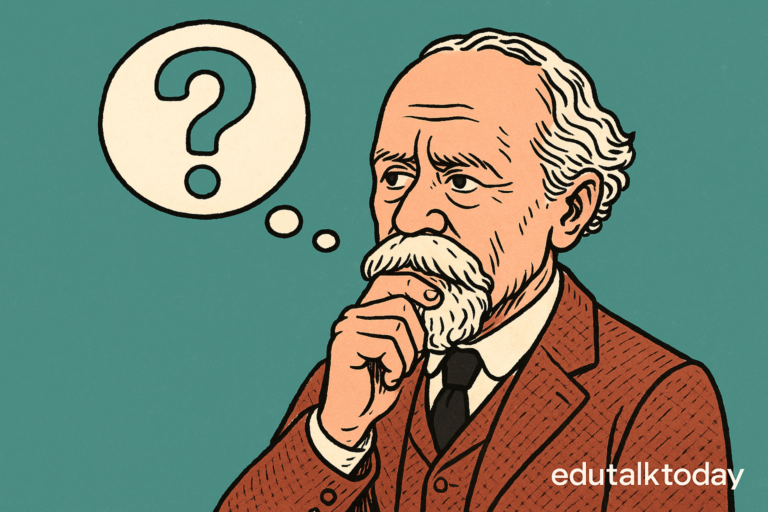Introduction to using pragmatist strategies in daily life challenges

Pragmatism often gets boxed in as a dusty philosophical movement, but the truth is it’s one of the most hands-on, alive ways of thinking we can bring into daily life. I’ve always loved how pragmatism doesn’t get hung up on ideals or rigid systems—it asks the tougher, more practical question: does this actually work? And if it doesn’t, what should we try next?
When I talk with colleagues about applying pragmatist thinking outside academia, there’s often this lightbulb moment. Suddenly, philosophy isn’t abstract anymore—it’s an everyday toolkit.
Think about it: whether you’re deciding how to manage a team conflict, figuring out how to streamline your morning routine, or even evaluating a tech stack, pragmatism gives us permission to experiment, adjust, and keep moving instead of waiting for the “perfect” answer. That’s what excites me most about writing this—I want to show how pragmatic strategies unlock new ways of navigating daily challenges.
Core ideas behind pragmatic thinking
When we talk about pragmatism at a high level, it can sound deceptively simple: “focus on what works.” But for those of us who live and breathe complex systems—whether in research, business, or technology—what works isn’t always obvious. Pragmatism is useful precisely because it provides a framework for thinking through uncertainty without getting paralyzed by it. Let me walk through a few key principles that I think are underrated, even among experts.
Instrumentalism is about tools, not truths
Charles Peirce and John Dewey weren’t obsessed with discovering some universal truth—they cared about whether a belief, a method, or a practice helped us navigate reality more effectively. Instrumentalism means ideas are tools, not trophies. This really changes how you think about challenges.
Take machine learning models as an example. In theory, we might want the most elegant or theoretically “pure” model. But in practice, the model that’s computationally feasible, easy to retrain, and interpretable for stakeholders often solves the real-world problem better. That’s pragmatism in action. You don’t worship the idea; you check whether it’s actually useful.
Fallibilism keeps us humble
One of my favorite aspects of pragmatism is fallibilism—the recognition that every belief or solution is provisional, open to revision. Experts sometimes fall into the trap of thinking their frameworks are bulletproof. I’ve definitely been guilty of this. But pragmatism reminds us that knowledge is always subject to correction.
Think about public health guidance during the early days of COVID-19. Messaging around masks changed rapidly as data evolved. Was it messy? Absolutely. But that messiness was a sign of fallibilism at work. We weren’t locked into an initial position—we adapted based on outcomes. That’s a level of humility and responsiveness that pragmatism insists on, even if it makes us uncomfortable.
Context matters more than universals
Another principle I think deserves more attention is contextualism. Pragmatism rejects the idea that solutions can be universally applied without adjustment. What works in one environment might flop in another.
For instance, I once consulted for two startups that had nearly identical business models but wildly different cultural dynamics. One thrived on asynchronous communication with barely any meetings. The other needed daily standups just to stay aligned. Applying the same “best practice” to both would have been a disaster. Context dictates utility, and pragmatism forces us to pay attention to those subtleties instead of defaulting to one-size-fits-all answers.
Life as a series of experiments
Finally, let’s talk about experimentation, which I think is the beating heart of pragmatism. Instead of seeking permanent solutions, pragmatism treats every action as a hypothesis to be tested. We try, we observe, we adjust. And the cycle never stops.
This experimental mindset shows up in the way product teams run A/B tests. They don’t assume they know exactly what users want—they launch two or three versions, gather data, and refine based on what actually resonates. But it’s not just for tech. I’ve personally applied this to how I structure my workday. At one point, I tried batching all emails into a single afternoon block. It was amazing for my focus but made me unresponsive to urgent issues. So I revised: two short check-ins instead of one giant block. That’s experimentation—real life as a lab.
Why this matters for experts
You might be thinking, “Okay, but don’t we already know this?” Here’s where I’d push back. Experts often know these principles but rarely operationalize them with discipline. We cling to elegant models, assume our expertise shields us from error, or apply strategies without questioning context. Pragmatism doesn’t let us off the hook. It asks us to embody these principles every day—constantly reframing, testing, and rethinking how we handle challenges.
To me, that’s what makes pragmatism exciting: it doesn’t just complement expertise—it sharpens it. By grounding our knowledge in lived, tested outcomes, it keeps us honest and ensures that expertise remains adaptive rather than brittle. And in a world where complexity is only growing, that’s not just useful—it’s essential.
Pragmatist strategies you can actually use
Now that we’ve unpacked the ideas, let’s get concrete. Philosophy is great, but it doesn’t mean much if it just stays in your head. What I’ve found most useful about pragmatism is how naturally it translates into small, repeatable strategies we can use to navigate everyday challenges. Some of these might sound familiar, but I want to frame them through a pragmatic lens so you can see the difference between a generic “tip” and a method grounded in this philosophy.
Reframe problems by asking “what works now?”
So many of us (especially in expert roles) love to ask, “What’s the ideal solution?” It’s natural—we’re trained to look for best practices, gold standards, optimized models. But pragmatism pushes us toward a humbler and often more productive question: what actually works right now, given the conditions in front of me?
I’ll give you a personal example. A while ago, I was mentoring a junior colleague who kept struggling with prioritization. Instead of teaching him some rigid productivity framework, I asked, “What method helps you get today’s most important task done?” It turned out that jotting down one Post-it with his top task (instead of a massive to-do list) completely shifted his focus. Was it elegant? Nope. Did it scale long term? Maybe not. But it worked now, and that’s what pragmatism is about.
Run micro-experiments before committing
Experts often fall into the trap of overhauling entire systems before testing them in smaller ways. Pragmatism teaches us to start small, test, and learn fast.
For example, a friend of mine runs operations at a nonprofit. They were considering moving from Slack to Microsoft Teams for the whole organization—a huge, disruptive change. Instead of flipping the switch, they ran a one-month pilot with a single department. They learned that while Teams offered better document integration, the cultural cost of losing Slack’s informal chat vibe was too high. That experiment saved them from making a painful mistake.
When you apply this kind of thinking to your own challenges—whether it’s a new research method, a new workout routine, or a new software tool—you gain data without unnecessary risk.
Judge ideas by outcomes, not intentions
This one stings a little. We all like to believe our intentions matter, and they do. But pragmatism says: judge by the consequences.
I once led a project where our team put a lot of heart into designing a beautifully polished onboarding flow for a product. Our intentions were to make the experience smooth and delightful. The outcome? Confused users, higher drop-offs, and more support tickets. Pragmatically, it didn’t matter how noble our intentions were—the results told us everything. We stripped things down, simplified steps, and suddenly adoption rates shot up.
This is humbling but liberating. It keeps you honest, even when your ego wants to defend the original plan.
Flexibility is strength, not indecision
One of the worst myths in professional culture is that flexibility equals weakness or lack of conviction. Pragmatism flips that story. Being flexible is being expert enough to adapt.
I remember talking to a software architect who completely restructured a backend system after realizing the initial design didn’t scale well under real traffic. He told me, “The younger version of me would’ve stubbornly defended the old architecture because it was mine. Now I see adaptability as part of mastery.” That’s pragmatism: measuring strength by how fluidly you can adjust.
Recalibrate your habits regularly
Habits are powerful, but they can turn into traps if we never question them. Pragmatism asks us to treat habits as hypotheses that need ongoing validation.
For instance, I used to swear by time-blocking every hour of my day. It worked beautifully when I was in a research-heavy role. Then I moved into a more managerial position with unpredictable demands, and my time-blocking started failing me. Pragmatism reminded me: if the tool isn’t working anymore, toss it. Now, I use a looser framework that prioritizes blocks of “deep focus” and “available time.” Same principle, different habit recalibration.
Collaboration as pragmatic knowledge-building
Finally, there’s something deeply pragmatic about treating collaboration as more than just dividing tasks. Pragmatism suggests that knowledge itself emerges through shared action and collective problem-solving.
In one workshop I facilitated, a team was deadlocked over how to allocate resources. Instead of debating endlessly, we designed a simulation: each subgroup made allocation choices under different constraints, then we compared results. Suddenly, the conversation shifted from abstract arguments to observed outcomes. The collaborative experiment generated insights no single person could’ve come up with.
That’s the pragmatist spirit: not arguing in circles, but testing together and learning through action.
Practicing pragmatism as an expert
Here’s where I want to push the envelope a bit. It’s one thing to adopt pragmatic tricks here and there. It’s another to make pragmatism a discipline—a way of structuring your expertise. For those of us who work in complex domains, that’s the real challenge.
Moving from theory-driven to feedback-driven
Experts are often rewarded for deep theoretical mastery. But in practice, the theories we love are always subject to the test of reality. Pragmatism doesn’t reject theory—it reframes it as a starting point, not a finish line.
Think about climate modeling. Theoretical frameworks about emissions, ocean currents, or atmospheric shifts are essential. But their value comes from how they hold up against real-world data. When models diverge from outcomes, the pragmatic expert doesn’t defend the model—they adapt it. This shift from theory-first to feedback-first is where pragmatism sharpens expertise.
Embracing the loop of observe → act → assess → refine
One of my favorite things about pragmatism is its cyclical nature. It doesn’t pretend we’ll ever land on the final answer. Instead, it gives us a process: observe, act, assess, refine, repeat.
I’ve applied this to my own teaching. I once ran a graduate seminar where I lectured heavily for the first half of the semester. Student feedback (and their glazed-over eyes) told me it wasn’t working. So I experimented—shorter lectures, more discussion. I observed, acted, assessed, refined. By the end of the semester, the class was electric. The loop never failed me.
Differentiating expertise from rigidity
A lot of experts get trapped in rigidity because they confuse consistency with competence. Pragmatism insists on a different kind of credibility: adaptable expertise.
When I see a physician change treatment protocols as new evidence emerges, or a CTO pivot a product roadmap after customer feedback, I see pragmatism at work. They don’t lose authority by changing—they deepen it. Because what makes someone an expert isn’t their ability to cling to old answers, but their skill in revising them gracefully.
Avoiding the extremes of perfectionism and shortcuts
One of the reasons pragmatism resonates with me is because it refuses both perfectionism and shallow quick fixes. It acknowledges that chasing perfect systems is paralyzing, but also that cutting corners leads to brittle solutions. Pragmatism offers a third path: good enough to work, flexible enough to evolve.
A colleague once described this as “building scaffolding, not monuments.” I love that. You create structures that support progress but aren’t sacred. They can be dismantled and rebuilt as conditions change. That’s how pragmatism inoculates us against both the anxiety of perfectionism and the laziness of shortcuts.
Making pragmatism a daily discipline
At the end of the day, pragmatism isn’t just a mindset—it’s a practice. It shows up in how you run meetings, how you evaluate data, how you mentor colleagues, how you structure your day. And the more deliberately you practice it, the sharper your expertise becomes.
What excites me is that pragmatism doesn’t ask you to abandon your specialized knowledge. It asks you to put it to the test constantly, to refine it through use, and to treat failure as feedback instead of defeat. That’s what makes an expert truly resilient.
Final Thoughts
Pragmatism is more than a philosophy—it’s a habit of living. It frees us from rigid ideals, reminds us that every solution is provisional, and keeps our expertise flexible and honest. In daily life, it’s about asking the right questions, running small experiments, recalibrating habits, and judging ideas by their outcomes. For experts, it’s about practicing adaptability as a discipline, not just a fallback.
When I step back, I think the most powerful gift of pragmatism is that it treats life as a lab—not a courtroom. We’re not here to defend truths at all costs. We’re here to test, refine, and keep moving. And in a world that changes faster than ever, that’s not just practical—it’s essential.





